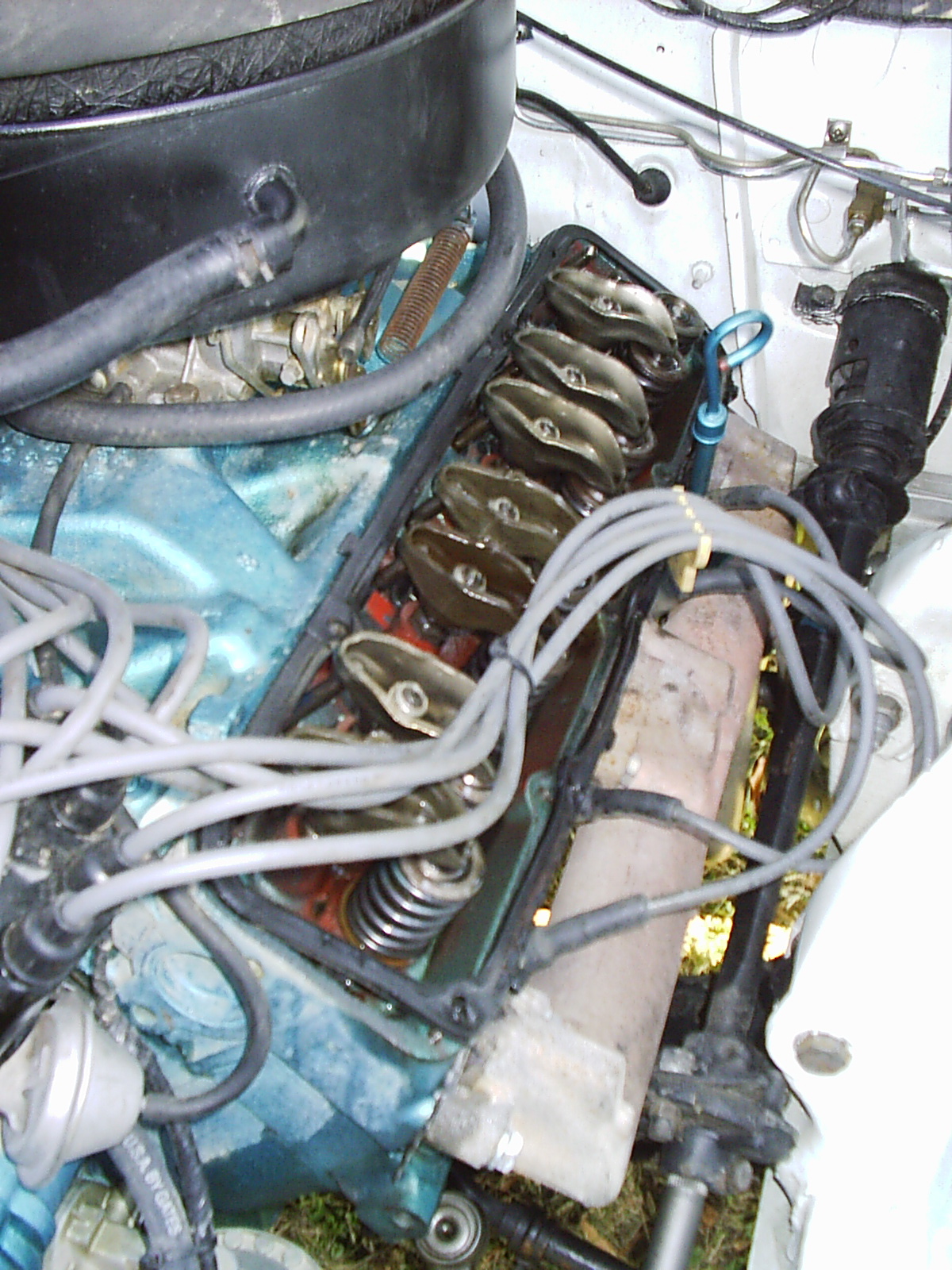Valvetrain on:
[Wikipedia]
[Google]
[Amazon]

 A valvetrain is a mechanical system that controls the operation of the intake and exhaust valves in an
A valvetrain is a mechanical system that controls the operation of the intake and exhaust valves in an

 A valvetrain is a mechanical system that controls the operation of the intake and exhaust valves in an
A valvetrain is a mechanical system that controls the operation of the intake and exhaust valves in an internal combustion engine
An internal combustion engine (ICE or IC engine) is a heat engine in which the combustion of a fuel occurs with an oxidizer (usually air) in a combustion chamber that is an integral part of the working fluid flow circuit. In an internal comb ...
. The intake valves control the flow of air/fuel mixture (or air alone for direct-injected engines) into the combustion chamber, while the exhaust valves control the flow of spent exhaust gases out of the combustion chamber once combustion is completed.
Layout
The valvetrain layout is largely dependent on the location of the camshaft. The common valvetrain configurations for piston engines, in order from oldest to newest, are: * Flathead engine: A single camshaft and the valves are located in theengine block
In an internal combustion engine, the engine block is the structure that contains the cylinders and other components. The engine block in an early automotive engine consisted of just the cylinder block, to which a separate crankcase was attach ...
below the cylinder or cylinder bank.
* Overhead valve engine: A single camshaft remains in the block below the cylinder(s), however the valves are located in the cylinder head above the combustion chamber.
* Overhead camshaft engine: Both the valves and one or more camshafts are located in the cylinder head above the cylinders or cylinder banks.
Components
The valvetrain consists of all the components responsible for transferring the rotational movement of the camshaft into the opening and closing of the intake and exhaust valves. Typical components are listed below in order from the crankshaft to the valves.Camshaft
The timing and lift profile of the valve opening events are controlled by the camshafts, through use of a carefully shaped lobe on a rotating shaft. The camshaft is driven by thecrankshaft
A crankshaft is a mechanical component used in a reciprocating engine, piston engine to convert the reciprocating motion into rotational motion. The crankshaft is a rotating Shaft (mechanical engineering), shaft containing one or more crankpins, ...
and, in the case of a four-stroke engine, rotates at half the speed of the crankshaft.
Motion is transferred from the crankshaft to the camshaft most commonly by a rubber timing belt, a metallic ''timing chain'' or a set of gears.
Pushrod
Pushrods are long, slender metal rods that are used in overhead valve engines to transfer motion from the camshaft (located in the engine block) to the valves (located in the cylinder head). The bottom end of a pushrod is mated to a lifter, upon which the camshaft makes contact. The camshaft lobe moves the lifter upwards, which moves the pushrod. The top end of the pushrod pushes on the rocker arm, which opens the valve.Rocker arm / Finger / Bucket tappet
Depending on the design used, the valves are actuated by a rocker arm,finger
A finger is a prominent digit (anatomy), digit on the forelimbs of most tetrapod vertebrate animals, especially those with prehensile extremities (i.e. hands) such as humans and other primates. Most tetrapods have five digits (dactyly, pentadact ...
, or bucket tappet. Overhead valve engines use rocker arms, which are actuated from below indirectly (through the pushrods) by the cam lobes. Overhead camshaft engines use fingers or bucket tappets, which are actuated from above directly by the cam lobes.
Valves
Most modern engines use poppet valves, although sleeve valves, slide valves androtary valve
A rotary valve (also called rotary-motion valve) is a type of valve in which the rotation of a passage or passages in a transverse plug regulates the flow of liquid or gas through the attached pipes. The common stopcock is the simplest form of ro ...
s have also been used at times. Poppet valves are typically opened by the camshaft lobe or rocker arm, and closed by a coiled spring called a ''valve spring''.
Valve float occurs when the valve spring is unable to control the inertia of the valvetrain at high engine speeds (RPM).
Valve guide
Valve guides ensure that engine valves are properly aligned, support the intake/exhaust valve stem, stabilize valve angle, and allow heat to escape to the cylinder head.See also
* Cam-in-block * Camless piston engineReferences
{{Internal combustion engine , state=expanded Engine components